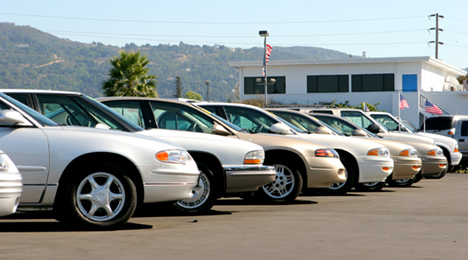Fitch expects floor plan ABS to remain stable

Fitch Ratings not only is looking at how subprime auto ABS is behaving; the firm also investigated and projected how the dealer floor plan ABS sector should perform.
Analysts think dealer floor plan ABS will remain stable despite Fitch’s expectation of an approaching new-vehicle sales plateau following historic growth observed during the past five years.
“However, U.S. dealership groups remain in strong financial health, contributing to stable expected performance metrics for the DFP ABS sector,” Fitch said.
The firm explained that solid dealer financials, built on strong revenue and decreasing costs, have led to positive migration to stronger credit tiers within DFP trusts. Fitch noticed dealer defaults have been minimal and net losses for most trusts remain at or near zero.
Monthly payment rates (MPRs), as measured by Fitch's Auto DFP MPR Index, averaged 41.3 percent for 2015 collection periods, marginally below the previous peak of 41.7 percent in 2013, but well above any other year for the index, which dates back to 2004.
“We expect MPRs and other performance metrics to normalize in 2016 as production and incentive levels continue to increase for nearly every auto manufacturer, as off-lease vehicle supply due back at dealer lots is expected to reach high levels,” analysts said.
Fitch acknowledged that it has observed the negative effect of these two factors on MPRs for certain trusts. But the firm expects MPRs to remain above early amortization triggers.
“Other performance metrics are also expected to remain solid. Fitch believes dealers are better positioned today to weather the storm any headwinds may bring,” analysts said.
Fitch calculated that average dealer profits rose to $1.17 million in 2015, up 7.4 percent over 2014, driving average return on equity for dealerships to 29.5 percent. This figure is up marginally from 29.2 percent in 2014, but well above all levels observed over the last decade.
“Rising dealership blue sky values have driven M&A activity into high gear, highlighted by Berkshire Hathaway’s recent purchase of the Van Tuyl Group, one of the largest U.S. dealership groups,” Fitch said.
“While new-vehicle sales in the U.S. rapidly increased to historic highs in recent years, the number of dealerships has remained relatively flat,” the firm continued. “Sales increased 5.8 percent year-over-year in 2015, but the number of dealers increased by only 0.3 percent, according to the National Automobile Dealers Association.”
Analysts also pointed out that truck sales have contributed to the improved financial positions for dealers “as consumers are flocking to dealers for new in-demand models in the low fuel price environment.” Fitch determined trucks accounted for 57 percent of new-vehicle sales in 2015, rising from 53 percent in 2014 and well above any level observed since 2000.
“Trucks carry higher retail pricing points and are therefore more profitable for dealers,” analysts said.
Fitch also mentioned another trend that is aiding dealers and their balance sheets.
“Dealers have also benefited from lower costs due to low benchmark rates and heightened lending competition compressing spreads,” analysts said. “The result is low dealer financing costs to floor plan vehicles from the manufacturers, typically one of the largest dealer expenses.
“However, with the recent rate increase in late 2015, floor plan interest expenses have risen slightly,” they continued. “Fitch believes the higher expenses could erode into profits levels in 2016, but not materially.”
Fitch currently rates six outstanding auto DFP trusts with $15.9 billion in notes outstanding from 20 Fitch-rated series. These include notes from Ally Master Owner Trust, BMW Floorplan Master Owner Trust, Ford Credit Floorplan Master Owner Trust A, GMF Floorplan Owner Revolving Trust, Mercedes-Benz Master Owner Trust and Nissan Master Owner Trust Receivables.

 View The Latest Edition
View The Latest Edition

